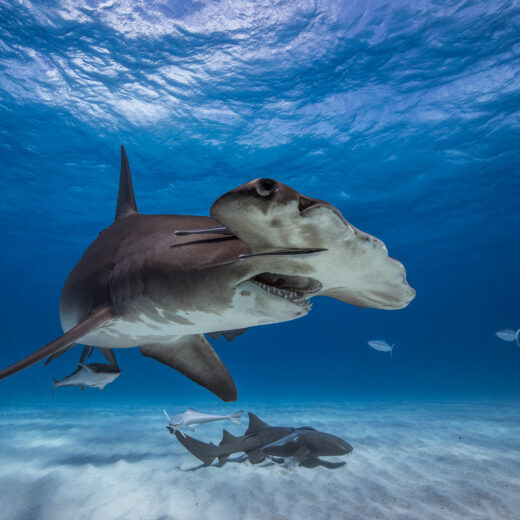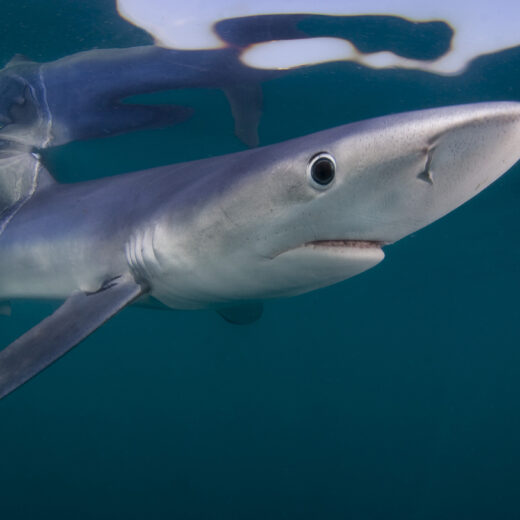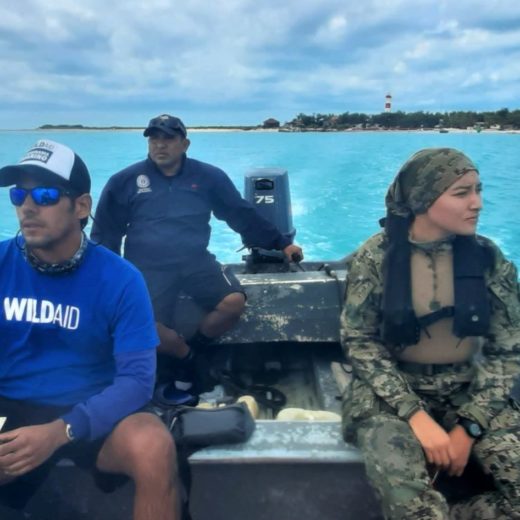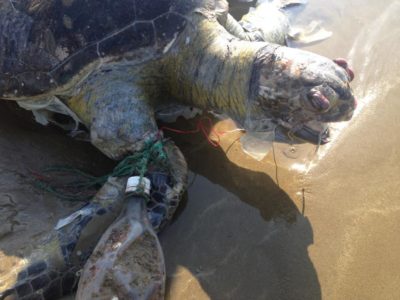
BY SILVIA SANCHEZ, WILDAID MARINE PROGRAM
A sea turtle spots a plastic bag floating among the waves. To him, it looks like a jellyfish, its general shape and consistency swaying and catching the light in just the right way. He swims toward it and ingests the bag in one gulp, satisfying his hunger, and then goes on his away. In actuality, that plastic bag lines his gut, causing digestive blockages and the sea turtle’s eventual death from starvation.
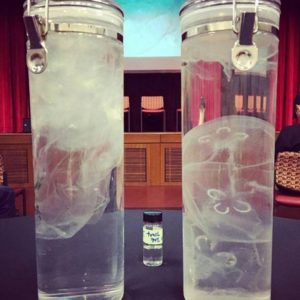

This story is all too common in the marine environment. In fact, a study estimated that more than half the world’s sea turtles and a staggering 90% of sea birds had ingested some form of plastic. Earlier this year, 13 sperm whales washed up in Germany and their necropsies revealed stomachs full of plastic waste including a 43-foot-long shrimp fishing net, a plastic car engine cover and a plastic bucket. Plastic and other debris, including discarded fishing lines and nets (also called “ghost nets”), are not just ingested, but also account for thousands of casualties. Sharks, whales and mantas that get tangled up in nets either suffer life-threatening injuries from their attempts to escape or they simply remain trapped eventually drowning to death.
Only 9% of plastics in the United States are recycled, and since most are not biodegradable, much of this refuse floats around for years, breaking down into smaller and smaller pieces that are invisible to the naked eye. In places like the Great Pacific Garbage Patch, one of five such patches in the world, the plastic has accumulated to encompass an area the size of Russia. Moreover, poisonous chemicals ride the same currents that create these patches and attach themselves to the plastic pellets, creating a toxic soup that is ingested by the fish species we eat. According to the Ellen MacArthur Foundation, by 2050 there will be more plastic than fish in the oceans.
This problem can’t be solved by any one person or organization, but efforts to recycle our trash, repurpose plastic waste (such as the collaboration between Parley and Adidas), organize beach clean-ups and develop policies to eliminate single-use plastics all help to reduce the amount of waste we produce.
WildAid currently works with marine parks throughout Ecuador to remove ghost nets and discarded fishing line from the sea during regular patrols. Park rangers in Machalilla recently set up a humpback whale rescue program to help animals entangled in fishing gear and other waste. They also run the Machalilla wildlife hospital to treat injured marine animals, especially sea turtles that are often admitted severely undernourished and suffering injuries from entanglements with marine debris. You can help reduce plastic consumption and save marine wildlife by participating in beach clean-ups, recycling plastic goods, and using reusable bags and bottles.
Stay in touch and get the latest WildAid updates.
SIGN UP
